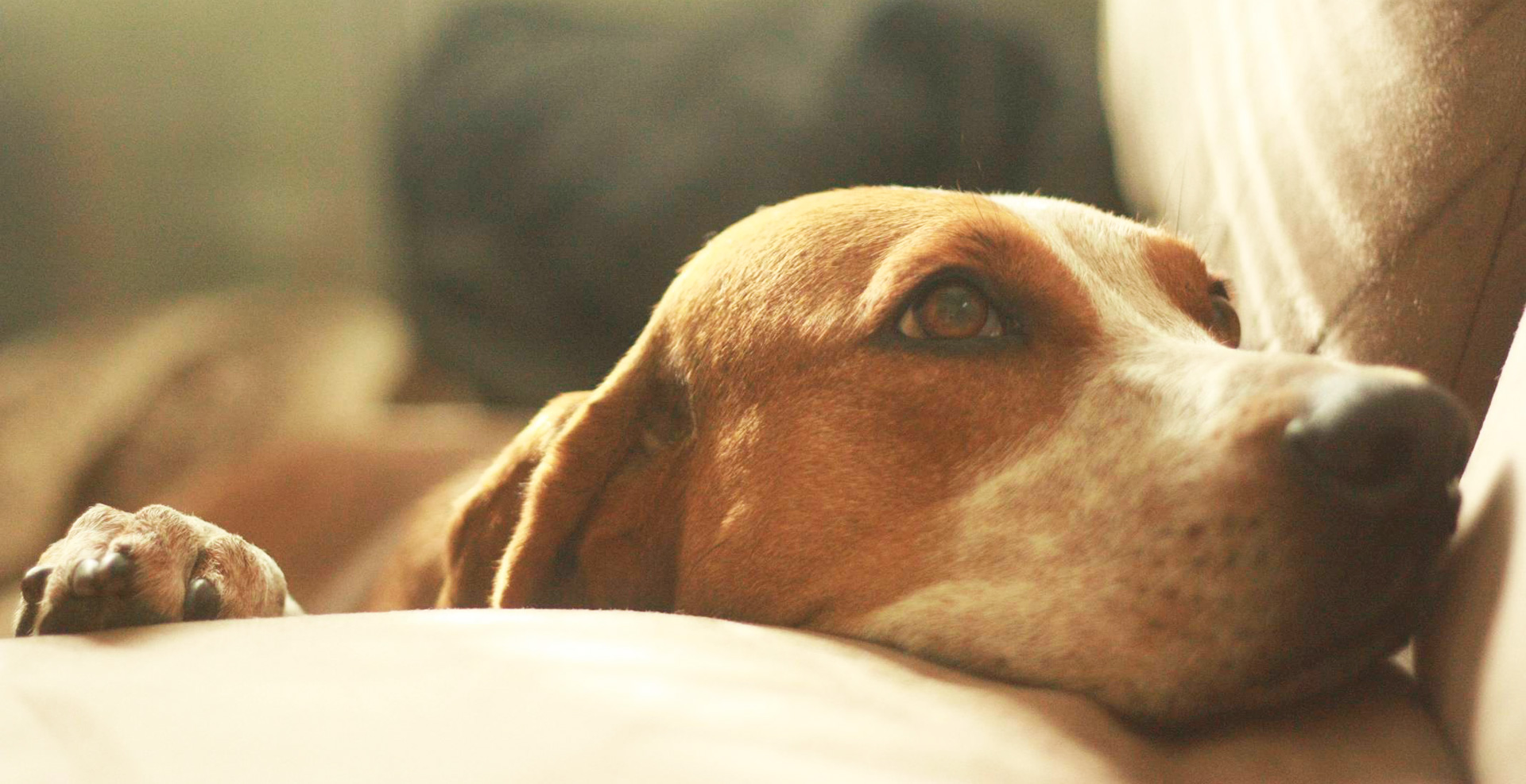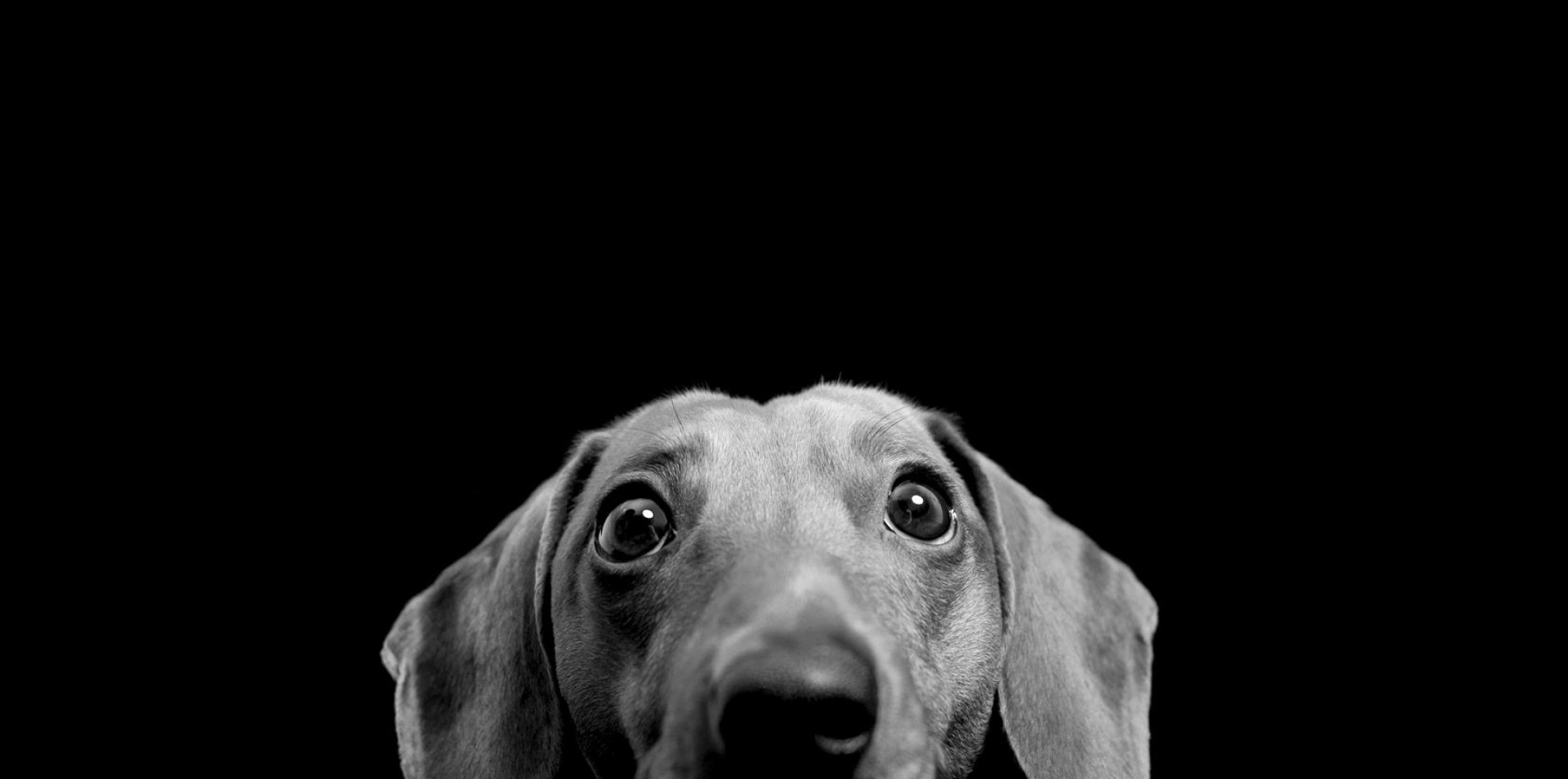Dog people (“people of the dog,” dog lovers — whatever you want to call them — they’re a large cross-section of humanity in this country) smile when they see Friend lumbering down the street, taking my wife, or me, or both of us, for a walk. Passersby on foot and in cars often stare in admiration and point at Friend — especially when they hear him hound. Friend’s distinctive bay comes from deep in his diaphragm and his throat is thick with muscles capable of producing a high-decibel type “whoop-whooping” that provokes droll imitation by children and adults (who really are too old for that kind of thing, especially leaning out their car windows).
Friend is a red-tick coonhound who, not long before we adopted him, was found wandering all alone in a field in Pennsylvania. The rescue organization speculated he was two years old, and the abandoned hunting dog of an obviously abusive owner. Sadly, Friend bears telltale signs of maltreatment. A white scar circles his massive head like a misshapen ivory necklace — the outline of a dog collar once allowed (or worse, forced) to embed in the loose folds of skin that hang about Friend’s massive neck. Also, Friend’s back right leg, once fractured — perhaps chasing prey while hunting — healed improperly and without proper care, resulting in Friend’s early development of arthritis and a permanent limp when he walks. Sometimes Friend forgets his leg is hurt and suddenly, when the spirit moves him, he’ll hop when he barks, punctuating his howl. And amazingly, even now, at the stately age of about 9, there are times Friend will unexpectedly jolt forward at Olympic speed triggered by an odiferous whiff in the air, a fire hydrant, a trashcan, or any communal point of canine urinary correspondence.
“(Friend is) very much here and now focused. (He) doesn’t sit around and ruminate about the past. (He) also (doesn’t) lay awake at night, consumed with massive worry and anxiety. Instead, (Friend) tend(s) to think about what is happening next at this exact moment in time.” (John D. Moore, Ph.D., “7 Mindfulness Tips from Your Dog” at Link.)
Indeed, Friend’s ability to squeeze joy out of every moment of life — now that he is well-cared for and loved — is infectious. His carpe diem is a model to be admired and imitated. As Cathy Hull wrote in an article fittingly titled, “What Dogs Teach Us about Peace, Joy, and Living in the Now” ( Link ): “Dogs live for today — and so can we. We can appreciate every moment as it comes and be grateful for what we have. Like all animals, when live in the present, we have more enthusiasm, joy for life, and less to worry (about).”

Friend revels in simple pleasures, primarily food. Like Edmund’s bottomless appetite for Turkish delight in C.S. Lewis’ “The Lion, The Witch and the Wardrobe,” Friend’s addiction to food is never fully satisfied. Despite repeated counseling to “slow down,” Friend’s feeding is always a quick affair. Not a believer in chewing slowly, Friend sucks his meals down in seconds like a high-powered vacuum cleaner. Friend’s passion for culinary delights is well-documented in our family: On one particular occasion at a family reunion on the day after Thanksgiving, immediately prior to the “big” meal being served, Friend decided to sample the hors d’oeuvres, making off with an entire block of cheese in his mouth before being apprehended.
After food, it’s all about sleep for Friend — usually, in the warmest, sunniest patch of real estate he can find. At night, Friend’s long legs twitch when he sleeps curled up on his very stinky pillow, and his droopy bloodshot eyes will even open momentarily and he’ll make high-pitched moaning sounds like he’s still on the hunt. But he’s dead asleep. I know because when he does this, I’ve often gone to him out of concern only to find he’s snoring — completely oblivious to my touch.
The thing about Friend – and the other two rescue dogs my wife and I own, as well as the very many future dogs of our dreams — is that he’s a natural de-stressor. When I pet and care for Friend, I don’t worry about my career as a struggling writer, I don’t worry about paying the bills — I don’t worry about anything at all. It’s a well-documented scientific phenomenon, this feeling of inner peace I have when I’m with Friend.
Alan Beck, Ph.D., director of the Center for the Human-Animal Bond at Purdue University School of Veterinary Medicine and his co-researcher Aaron Katcher found in the early 1980s that when people interact with dogs, “You actually get a drop in blood pressure – a true relaxation response.” (Jessica Gross, The Health Benefits Of Having A Dog, at Link )
More recently, researchers in Japan found that dog owners who were bonded to their pets experienced a spike in oxytocin — a neurotransmitter that helps us cope with stress — from simply meeting their dogs’ gazes. Playing with your dog also focuses your attention.
“It keeps you in the moment,” says Beck. “So when you’re talking and playing with your dog, your mind is not free to worry. We intuitively try and do this anyway — we listen to music, we sit in a coffee shop, we watch TV — just to keep our minds focused on what’s going on right now. But if that focus is nature or an animal, it’s that much easier.”
Sadly, despite these important and physical and mental health benefits that domesticated animals provide, the American Society for the Prevention of Cruelty to Animals (ASPCA) notes on its website that “approximately 7.6 million companion animals enter shelters nationwide every year. Of those, approximately 3.9 million are dogs and 3.4 million are cats. Each year, approximately 2.7 million animals are euthanized (1.2 million dogs and 1.4 million cats).” So, you who are reading this: Isn’t it time to consider whether your household can afford another (or a first) dog? If you’re lucky like me, you might find a Friend too.






